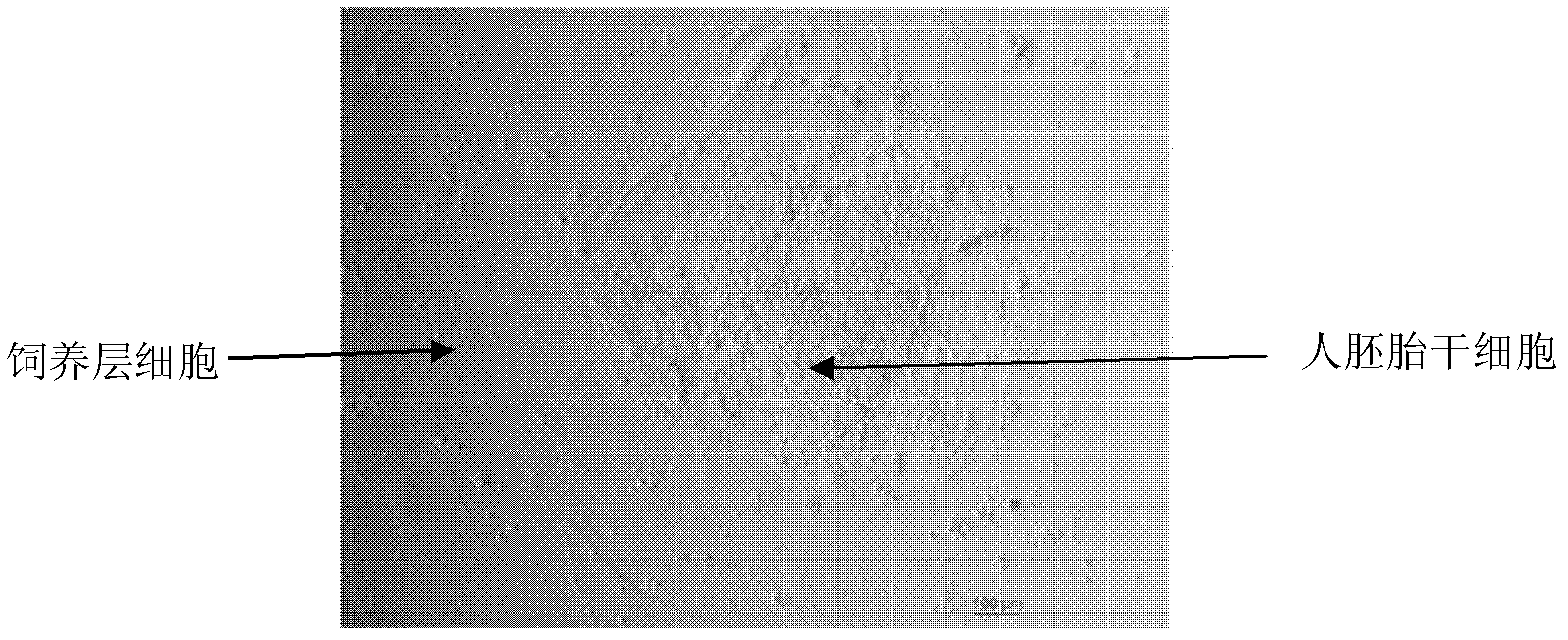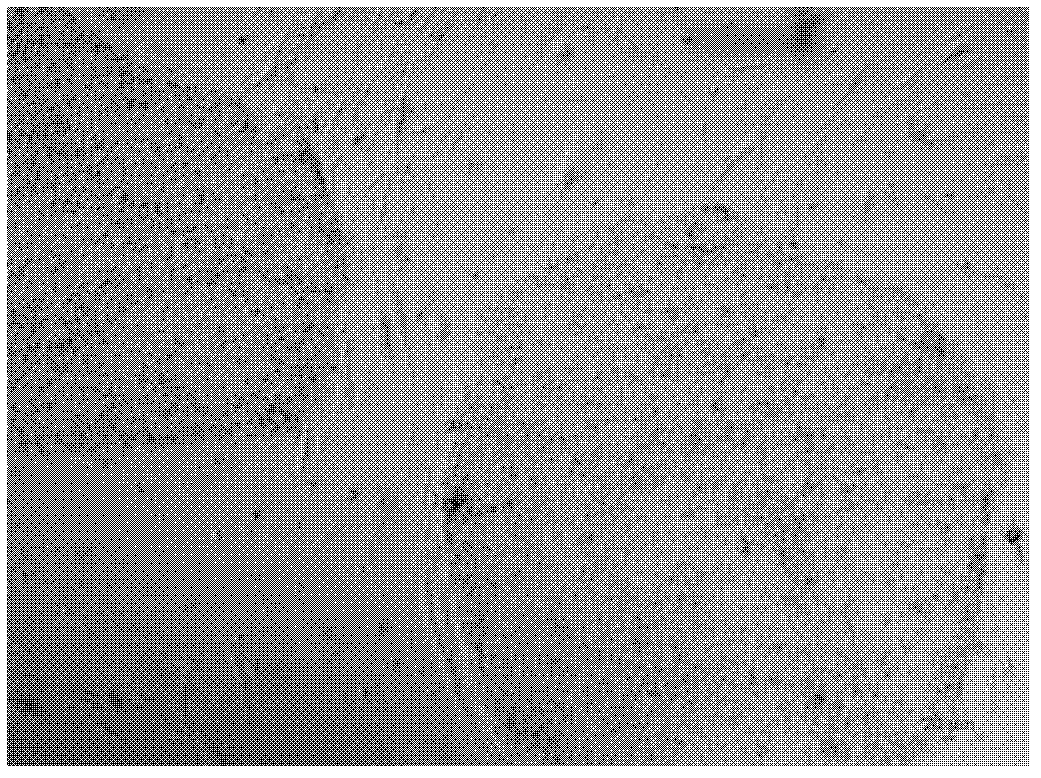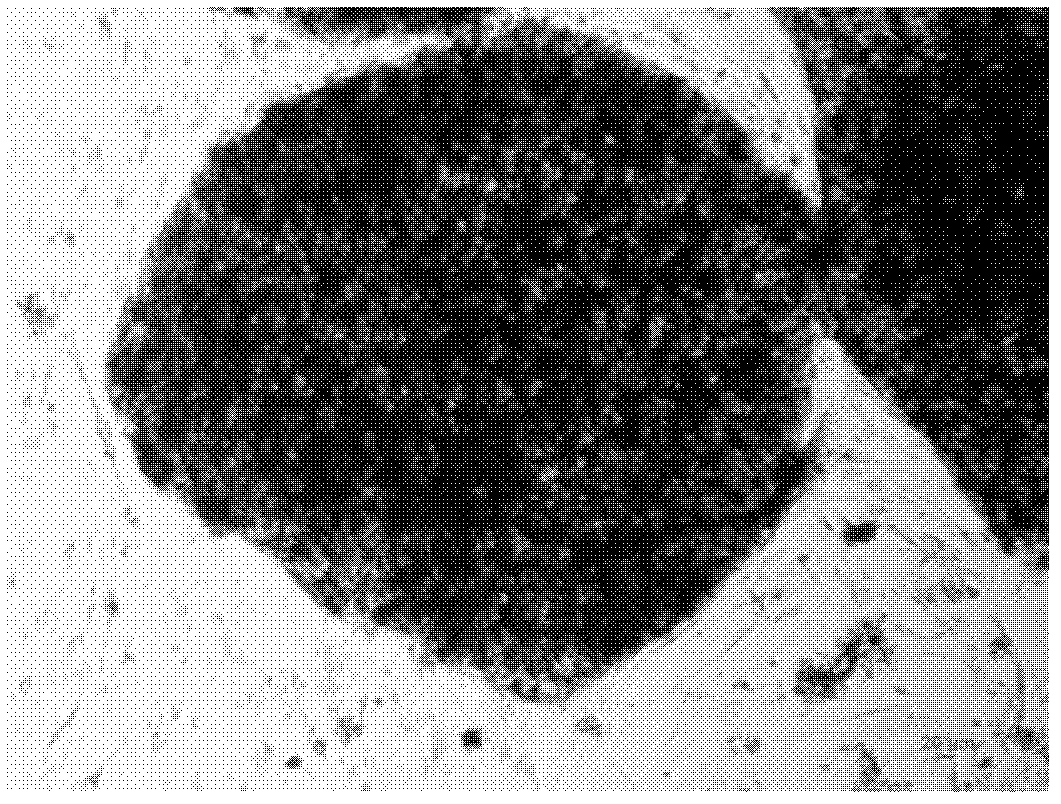A method for preparing feeder layer cells
A technology of feeder cells and adherent cells, which is applied in the field of preparation of feeder cells, can solve the problems of cumbersome preparation process, cell treatment methods and conditions without exact procedures and reports, and heavy workload, so as to simplify experimental operations, Overcoming counting subjectivity and inaccuracies and supporting growth effects
- Summary
- Abstract
- Description
- Claims
- Application Information
AI Technical Summary
Problems solved by technology
Method used
Image
Examples
Embodiment 1
[0043] Embodiment 1, preparation and application effect of feeder layer cells
[0044] 1. Preparation of feeder cells
[0045] 1. Preparation of mouse embryonic fibroblasts (primary cells)
[0046] (1) Take a 13.5-day-old ICR pregnant mouse, kill it by breaking the neck, soak it in alcohol for a few seconds to disinfect, control the alcohol and place it in a sterile petri dish; expose the uterus under sterile conditions, lift the end of the cervix near the cervix with tweezers, The mesentery was separated, and the uterine horns were cut off; the whole uterus was taken out, placed in a plate with PBS buffer, washed three times with PBS buffer, and the residual blood on the surface was discarded.
[0047] (2) Cut the uterus along the side of the mesentery, take out the embryo with the fetal membrane, put it in another plate filled with PBS buffer, wash it thoroughly, discard the surface red blood cells; tear the fetal membrane with small forceps, take out Fetal mice, discard t...
Embodiment 2
[0071] Embodiment 2, preparation and application effect of feeder layer cells
[0072] 1. Preparation of feeder cells
[0073] Mouse embryonic fibroblasts were purchased from Sciencell, USA (article number M7540).
[0074] 2. Passage of mouse embryonic fibroblasts
[0075] During the passage process, the cells were cultured with complete medium, and the passages were carried out in 100mm culture dishes.
[0076] (1) Culture mouse embryonic fibroblasts (P0 generation cells), observe the adherence situation, and the cell density reaches about 90% after 3 days.
[0077] (2) The cells in step (1) are digested and subcultured at 1:5, which is the P1 generation, and the cell density reaches about 80% after 3 days of culture.
[0078] (3) The cells in step (2) are digested and subcultured at 1:5, which is the P2 generation, and the cell density reaches about 80% after 3 days of culture.
[0079] (4) The cells in step (3) are digested and subcultured at 1:5, which is the P3 genera...
PUM
 Login to View More
Login to View More Abstract
Description
Claims
Application Information
 Login to View More
Login to View More - R&D
- Intellectual Property
- Life Sciences
- Materials
- Tech Scout
- Unparalleled Data Quality
- Higher Quality Content
- 60% Fewer Hallucinations
Browse by: Latest US Patents, China's latest patents, Technical Efficacy Thesaurus, Application Domain, Technology Topic, Popular Technical Reports.
© 2025 PatSnap. All rights reserved.Legal|Privacy policy|Modern Slavery Act Transparency Statement|Sitemap|About US| Contact US: help@patsnap.com



